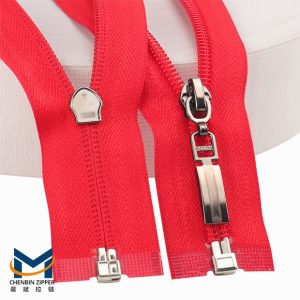Introduction
Zippers are an essential component of many items we use daily, from clothing to bags and outdoor gear. Nylon zippers, in particular, are popular due to their durability and flexibility. However, even the most robust zippers can encounter issues over time. Whether it’s a stuck slider, separated teeth, or a completely broken zipper, knowing how to repair a nylon zipper can save you time, and money, and extend the life of your favorite items.
In this comprehensive guide, we’ll explore various techniques and methods to fix common nylon zipper problems. We’ll provide step-by-step instructions, helpful tips, and even some quick hacks to get your zipper functioning smoothly again. So, let’s dive in and learn how to become a zipper repair expert!
Understanding Nylon Zippers
Before we delve into repair techniques, it’s essential to understand the components of a nylon zipper:
1. Teeth: The interlocking parts that join the two sides of the zipper.
2. Slider: The moving part that zips and unzips the teeth.
3. Top stop: The metal or plastic piece at the top of the zipper that prevents the slider from coming off.
4. Bottom stop: Similar to the top stop, but located at the bottom of the zipper.
5. Tape: The fabric part of the zipper that holds the teeth and is sewn into the garment or item.
Understanding these components will help you identify the problem and choose the appropriate repair method.
Common Nylon Zipper Problems and Solutions
1. Stuck Zipper
A stuck zipper is one of the most common issues. Here’s how to fix it:
1. Lubricate the zipper teeth using a graphite pencil, bar soap, or a specialized zipper lubricant.
2. Gently move the slider up and down to work the lubricant into the teeth.
3. If the zipper is still stuck, check for any fabric or debris caught in the teeth and carefully remove it using tweezers.
2. Separated Zipper Teeth
When zipper teeth separate, follow these steps:
1. Align the separated teeth carefully.
2. Using pliers, gently squeeze the slider on both sides to tighten it.
3. Slowly move the slider up and down, ensuring the teeth interlock properly.
3. Broken Slider
If the slider is damaged, you’ll need to replace it:
1. Remove the top stop using pliers.
2. Slide off the old slider.
3. Thread the new slider onto the zipper teeth.
4. Reattach the top stop or create a new one using a strong thread.
4. Missing Teeth
For a zipper with missing teeth:
1. Sew a new bottom stop just above the missing teeth using a strong thread.
2. If necessary, trim the zipper tape below the new stop.
3. Test the zipper to ensure it stops at the new bottom stop.
DIY Zipper Repair Techniques
The Graphite Pencil Hack
For stubborn, sticky zippers:
1. Rub the lead of a graphite pencil along the zipper teeth.
2. Move the slider up and down to distribute the graphite.
3. Wipe away any excess graphite with a cloth.
This method provides lubrication without attracting dirt like oil-based solutions.
The Soap Solution
Another quick fix for stuck zippers:
1. Run a bar of soap along the zipper teeth.
2. Work the slider up and down to distribute the soap.
3. Wipe away any excess soap with a damp cloth.
This method is particularly useful for outdoor gear exposed to harsh elements.
Tightening a Loose Slider
If your zipper keeps separating, the slider might be too loose:
1. Remove the slider from the zipper.
2. Use pliers to gently squeeze the slider’s back, top, and bottom.
3. Reattach the slider and test the zipper.
Professional Zipper Repair Methods
For more complex repairs or valuable items, consider these professional techniques:
Complete Zipper Replacement
Sometimes, replacing the entire zipper is necessary:
1. Carefully remove the old zipper using a seam ripper.
2. Measure and cut the new zipper to size.
3. Pin the new zipper in place.
4. Sew the new zipper onto the item using a zipper foot on your sewing machine.
Zipper Tape Repair
If the zipper tape is damaged but the teeth are intact:
1. Remove the damaged section of the tape.
2. Cut a piece of matching fabric to size.
3. Sew the new fabric onto the existing zipper tape.
4. Reattach any stops or sliders as needed.
Zipper Maintenance Tips
Prevention is often the best cure. Here are some tips to keep your nylon zippers in top condition:
1. Clean zippers regularly with a soft brush to remove dirt and debris.
2. Avoid forcing a stuck zipper; instead, investigate the cause and address it gently.
3. When washing items with zippers, close the zippers to prevent damage to other garments.
4. Apply a silicone-based lubricant to zippers on outdoor gear annually to prevent corrosion and sticking.
When to Seek Professional Help
While many zipper problems can be solved at home, there are instances where professional help might be necessary:
1. Valuable or sentimental items where a mistake could be costly.
2. Complex repairs requiring specialized equipment.
3. Zippers on waterproof or technical gear where improper repair could compromise functionality.
4. When you’ve attempted a repair and the problem persists or worsens.
Many tailors and repair shops specialize in zipper repairs and can often fix issues quickly and affordably.
Conclusion
Repairing a nylon zipper doesn’t have to be a daunting task. With the right knowledge, tools, and techniques, you can tackle the most common zipper problems and extend the life of your favorite items. Remember to approach each repair patiently and carefully, and don’t hesitate to seek professional help for complex issues or valuable items.
By mastering these zipper repair skills, you’ll not only save money but also contribute to reducing waste by repairing rather than replacing items. So the next time you encounter a zipper problem, take a deep breath, refer back to this guide, and tackle the repair with confidence!
Frequently Asked Questions
Q1: Can I use oil to lubricate a stuck zipper?
A1: While oil can provide temporary relief, it’s not recommended for long-term use on zippers. Oil can attract dirt and debris, potentially making the problem worse over time. Instead, opt for dry lubricants like graphite or specialized zipper lubricants.
Q2: How do I know if my zipper needs to be replaced entirely?
A2: Consider replacing the entire zipper if multiple teeth are missing, the tape is severely damaged, or if you’ve attempted repairs multiple times without success. Also, if the cost of repairs approaches the cost of the item itself, replacement might be more economical.
Q3: Can I repair a water-resistant zipper on my own?
A3: Water-resistant zippers require special care. While minor repairs like lubricating or unsticking can be done at home, major repairs that could compromise the zipper’s water-resistant properties should be handled by professionals to ensure the item maintains its functionality.
Q4: What’s the best way to prevent zipper damage?
A4: To prevent zipper damage, always zip and unzip carefully without forcing the slider. Keep zippers clean and free from debris, and avoid overloading bags or garments that could put excess stress on the zipper. Regular maintenance, such as occasional lubrication, can also help prevent issues.
Q5: Are there any quick temporary fixes for a broken zipper in an emergency?
A5: In an emergency, you can use a safety pin or paper clip to hold a zipper closed temporarily. For a separated zipper, try using a key ring or small carabiner to keep the slider in place until you can perform a proper repair.














